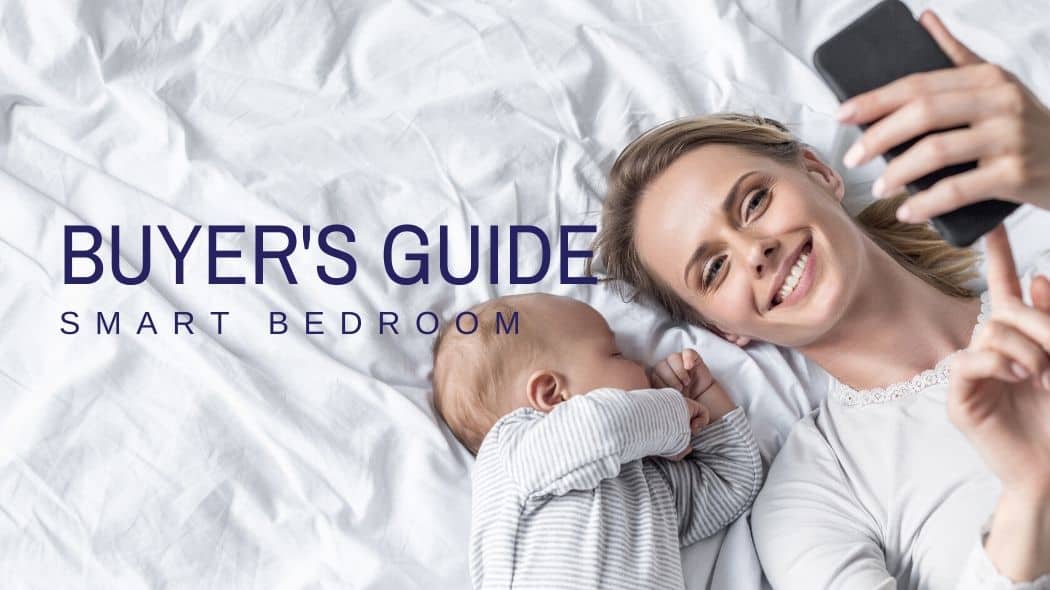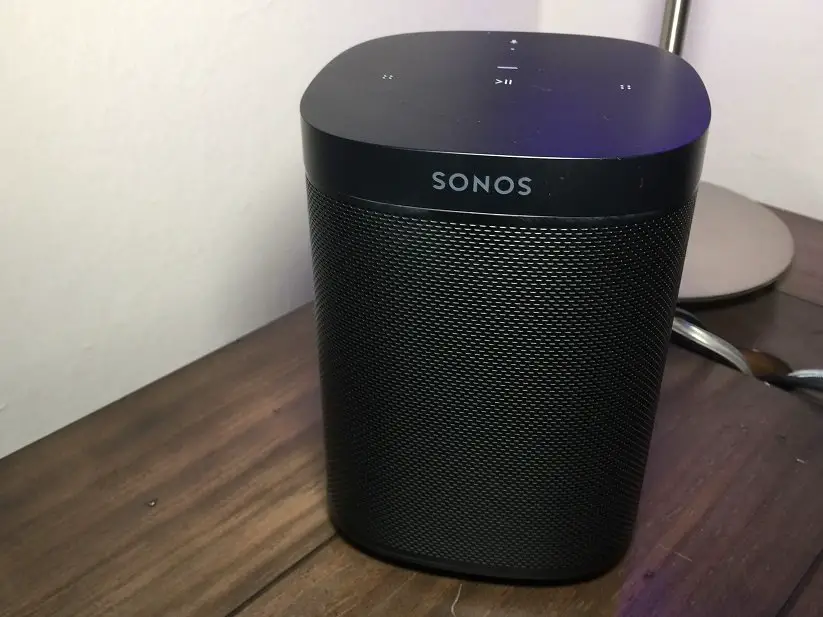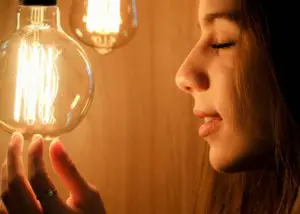**This post contains affiliate links and I will be compensated if you make a purchase after clicking on my links.
>> For more detail on how to make your bedroom “Smart” see my post HERE.
Voice activation
Start with voice activation. Fill your home with devices either from Google or Amazon. (Or in my case, both.)
In my experience, Google devices are a touch better at responding to my voice, while Amazon devices have better management of alarms.
But they work more or less the same.
Both come in different models. The more expensive models have better speakers. If you listen to music you are most likely using either a separate Bluetooth speaker or music system, such as the SONOS (below).
In other words, purchase the less expensive devices, either the Google Nest Mini or Amazon Echo Dot.
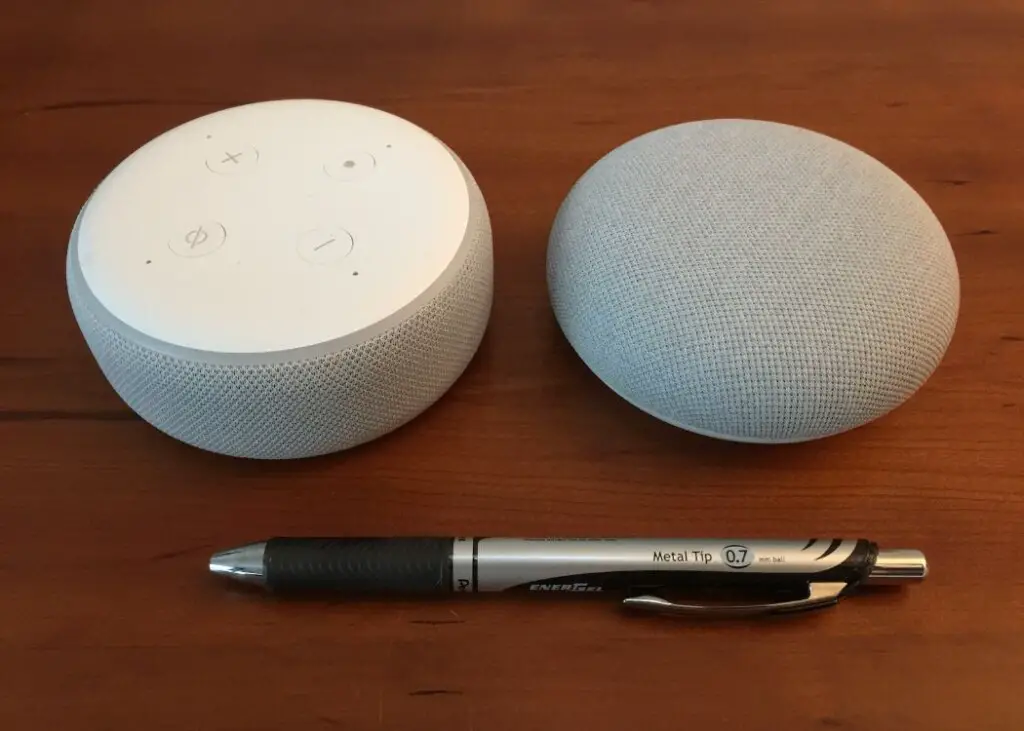
The Amazon Echo Dot (3rd gen) left, and the Google Nest mini (2nd gen) right.
- Echo Dot—3rd Generation. Smart speaker with Alexa.
More recently Amazon has released the cheaper Echo Flex, which plugs directly into an outlet. You may also purchase separately, an attached nightlight or attached motion sensor.
I currently have one installed in my bathroom, along with the Smart night-light. The night-light can be adjusted to any brightness and set to any color; I’ve chosen a sleep-friendly red. The light contains a sensor that will turn on when the room is dark. And obviously, it turns on or off in response to voice commands.
(This should’ve been obvious, but unlike my other smart lights, this light can only be controlled by Alexa. Not Google.)
If you have outlets in your hallway, or near the entrance of a particular room, the motion sensor would be useful for turning separate groups of smart lights on or off.
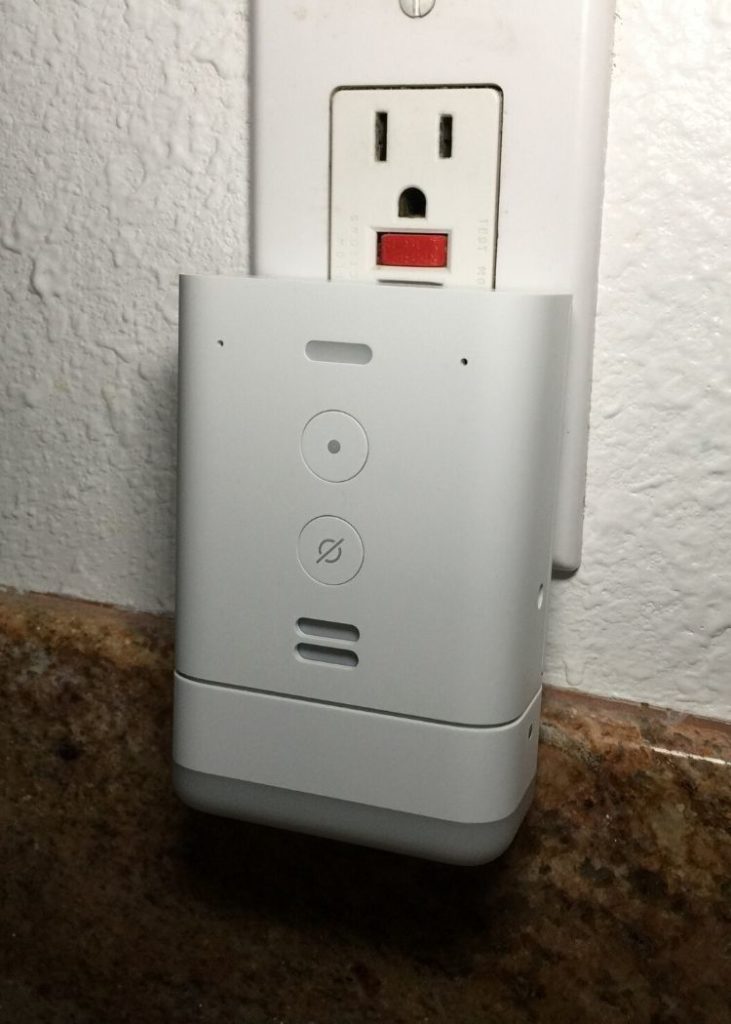
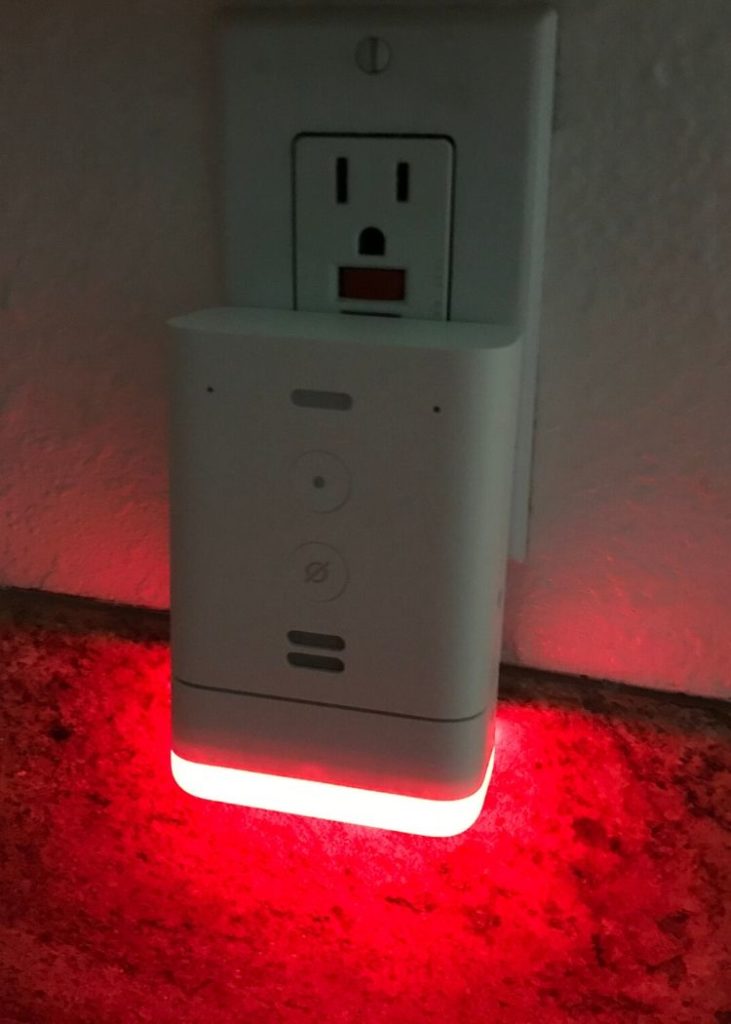
- Echo Flex. Plug-in mini smart speaker with Alexa.
- Smart Night-Light for Echo Flex. “Made for Amazon” by THIRDREALITY
- Motion Sensor for Echo Flex. “Made for Amazon” by THIRDREALITY
Kasa WiFi-enabled devices by TP-Link
Next, you need something to control with your voice. Choose from a selection of smart switches, plugs, and lightbulbs. These devices will either by WiFi-enabled, or they will need a hub that plugs into your router.
WiFi-enabled devices take longer to set up, but no hub is required. It’s a good place to start.
This Kasa switch runs my whole house fan.
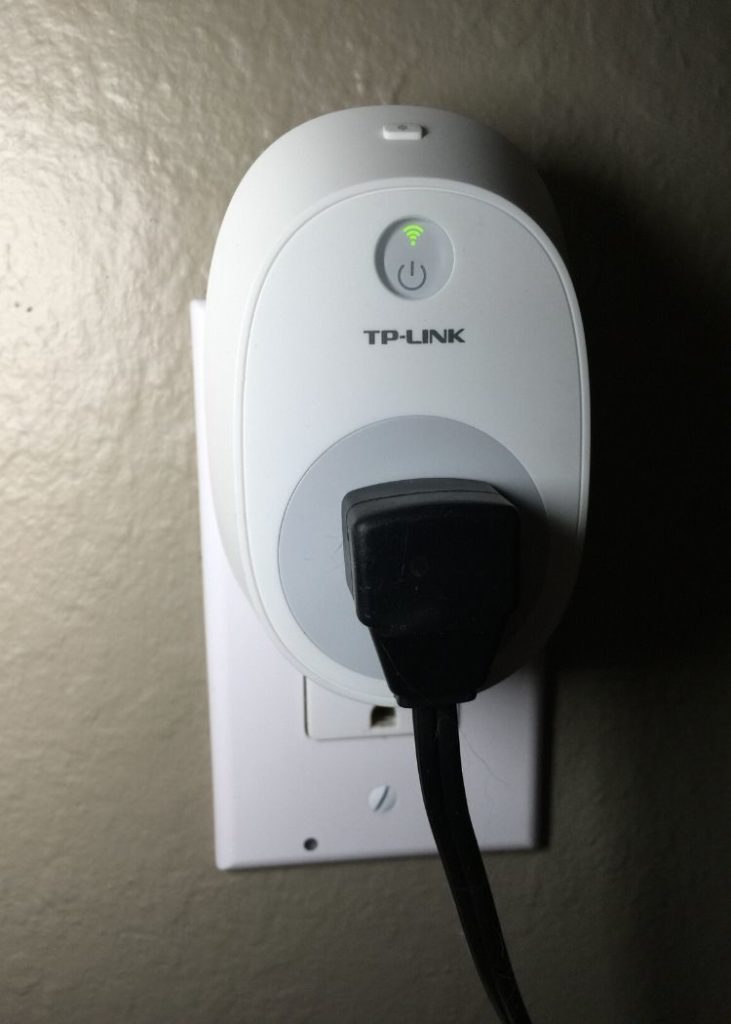
An older Kasa plug. (Newer models have a smaller form factor.)
- Kasa Smart Plug Lite by TP-Link. Smart Home WiFi outlet, works with Alexa Echo and Google Home. No hub required.
- Kasa Smart Light Switch by TP-Link. WiFi light switch. Works with Alexa and Google.
- TP-Link Kasa Smart Dimmer. WiFi light switch. Works with Alexa and Google.
- TP-Link Kasa Smart WiFi bulb. Works with Alexa and Google. I would recommend the Warm Amber for the bedroom. Dimmable and Tunable White are also available.
(All three listed bulbs are dimmable and have the standard E26 base. The latter two are A19, which is the standard lightbulb shape and base.)
Hub-based lights by Hue
There are several hub-based light systems available. Although a tad pricey, I’ve chosen Hue because of its broad light selection. (That, and back in the day they were the only one available.)
A “starter-kit” will come with a hub. Add needed lights from there. Once the hub is set up, adding new lights via the Hue phone app is very easy. The app simply “finds” them.
The less expensive lights generate one color of dimmable light. For greater flexibility, purchase a bulb where the light temperature can be adjusted to a nice sleep-friendly warm tone. Better yet, get the full-color bub that can create any color, including any temperature of white.
- Philips Hue White Smart Bulb Starter Kit. 60W equivalent LED, A19 bulbs. Compatible with Alexa, Apple HomeKit, and Google.
- Philips Hue White and Color Ambiance Smart Bulb Starter Kit. 60W equivalent LED, A19 bulbs. Compatible with Alexa, Apple HomeKit, and Google.
SONOS music system
You can always add a Bluetooth speaker to your Alexa or Google device, but another option is to build a SONOS music system throughout your home.
All the speakers are linked together using their own proprietary wireless system. Link one speaker to the internet via a wired or WiFi connection, and all the speakers can access almost any music service or—if you still bother—the stash of ripped music on your computer hard-drive.
Speakers may be grouped however you like. Listen to the same thing in all rooms or different music in each.
One of the easiest ways to get started is with a SONOS One. The One has Alexa or Google Assistant built right in.
(Although note that some of the functionality of those assistants is missing in the One.)
- SONOS One (Generation 2). Voice-controlled Smart speaker with Amazon Alexa [and Google Assistant] built-in
45-day return policy from SONOS

